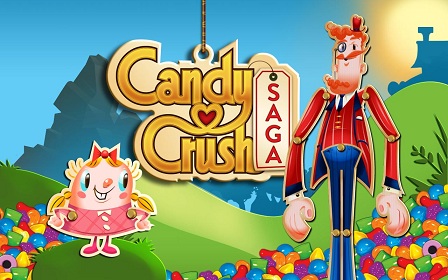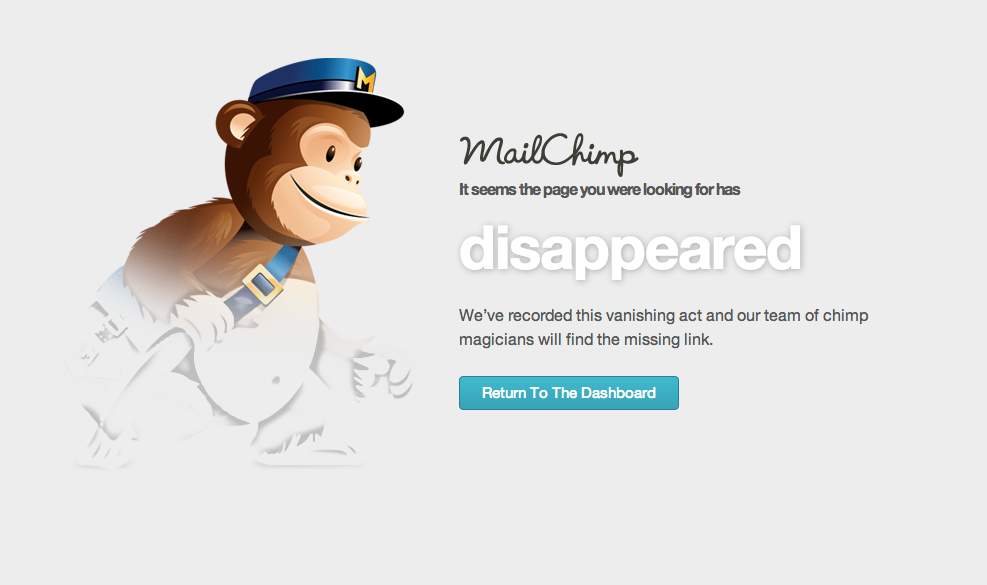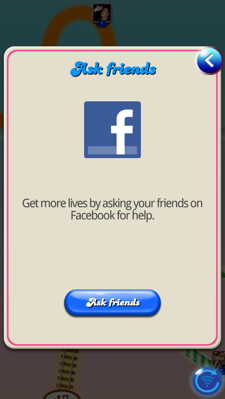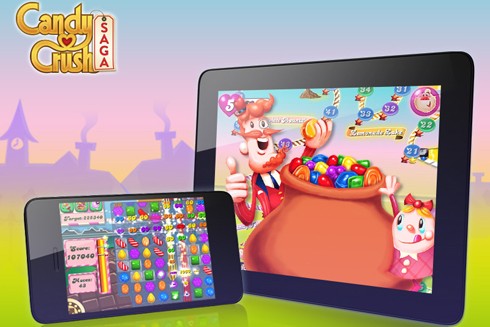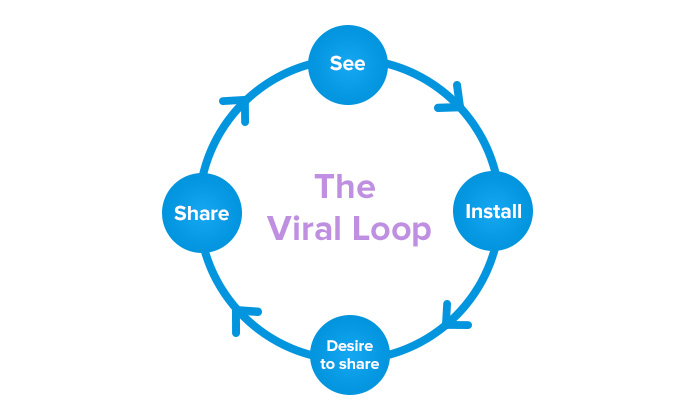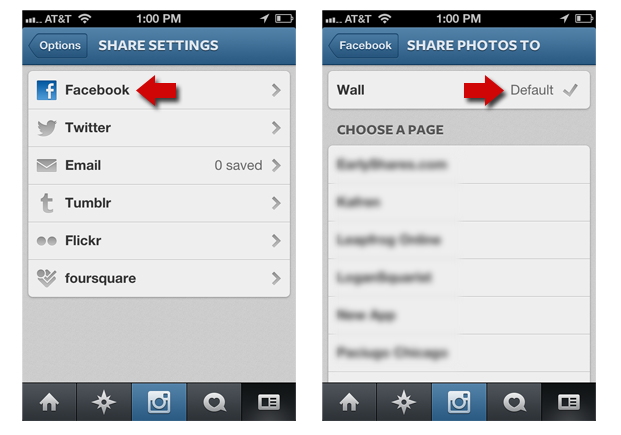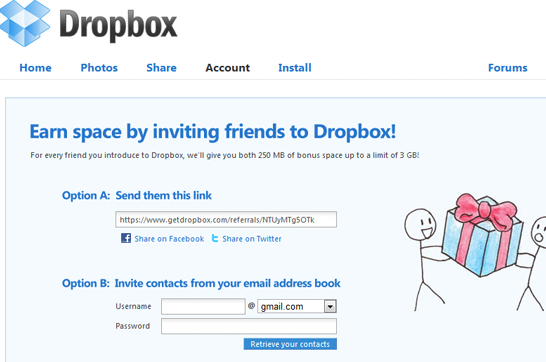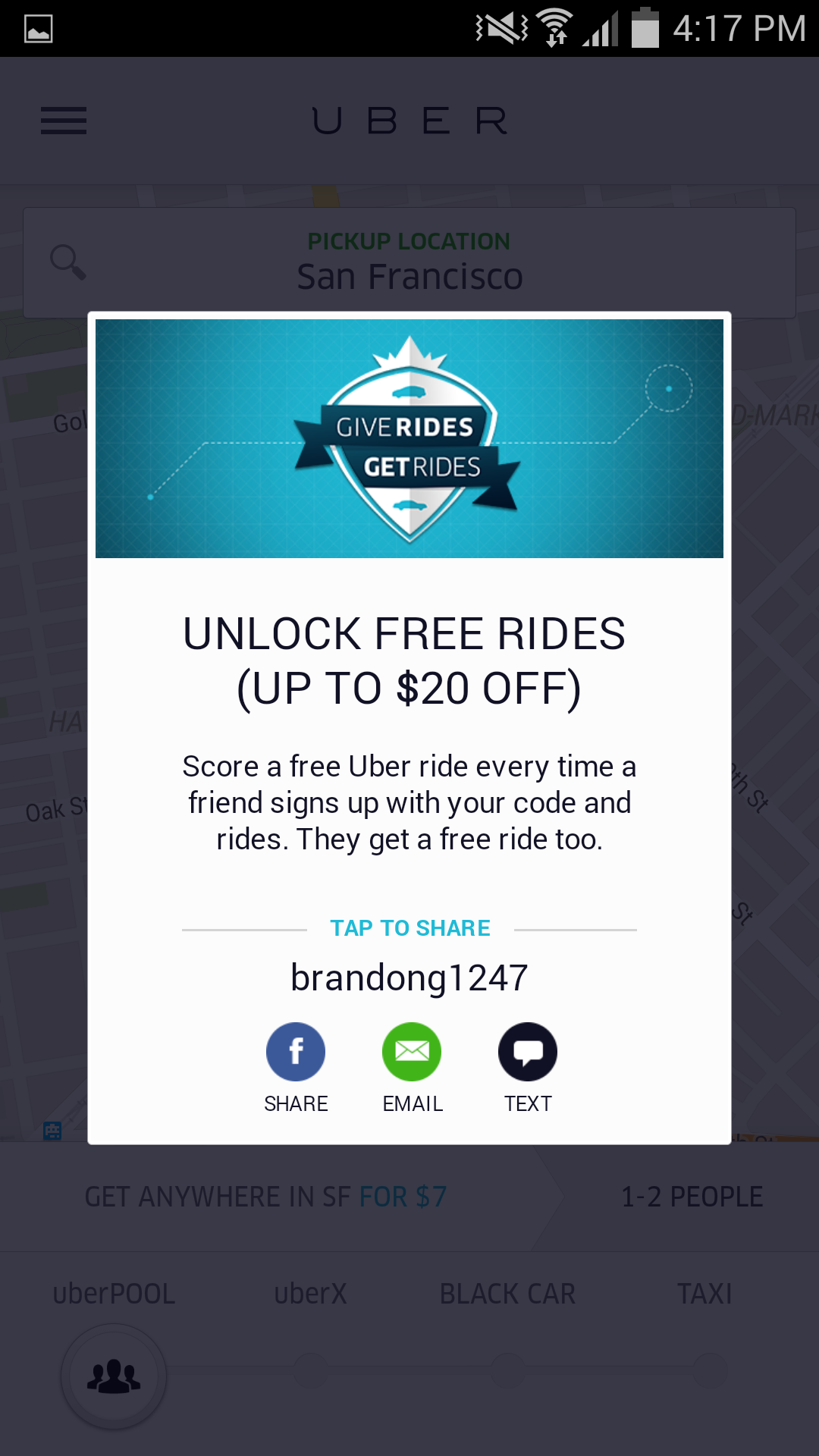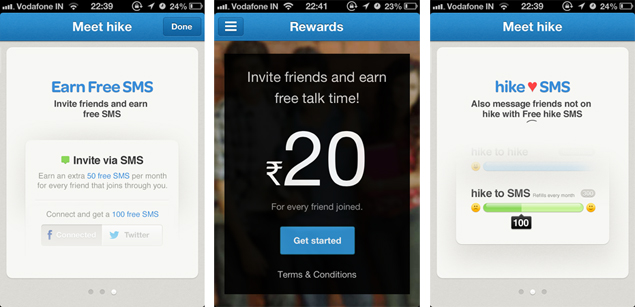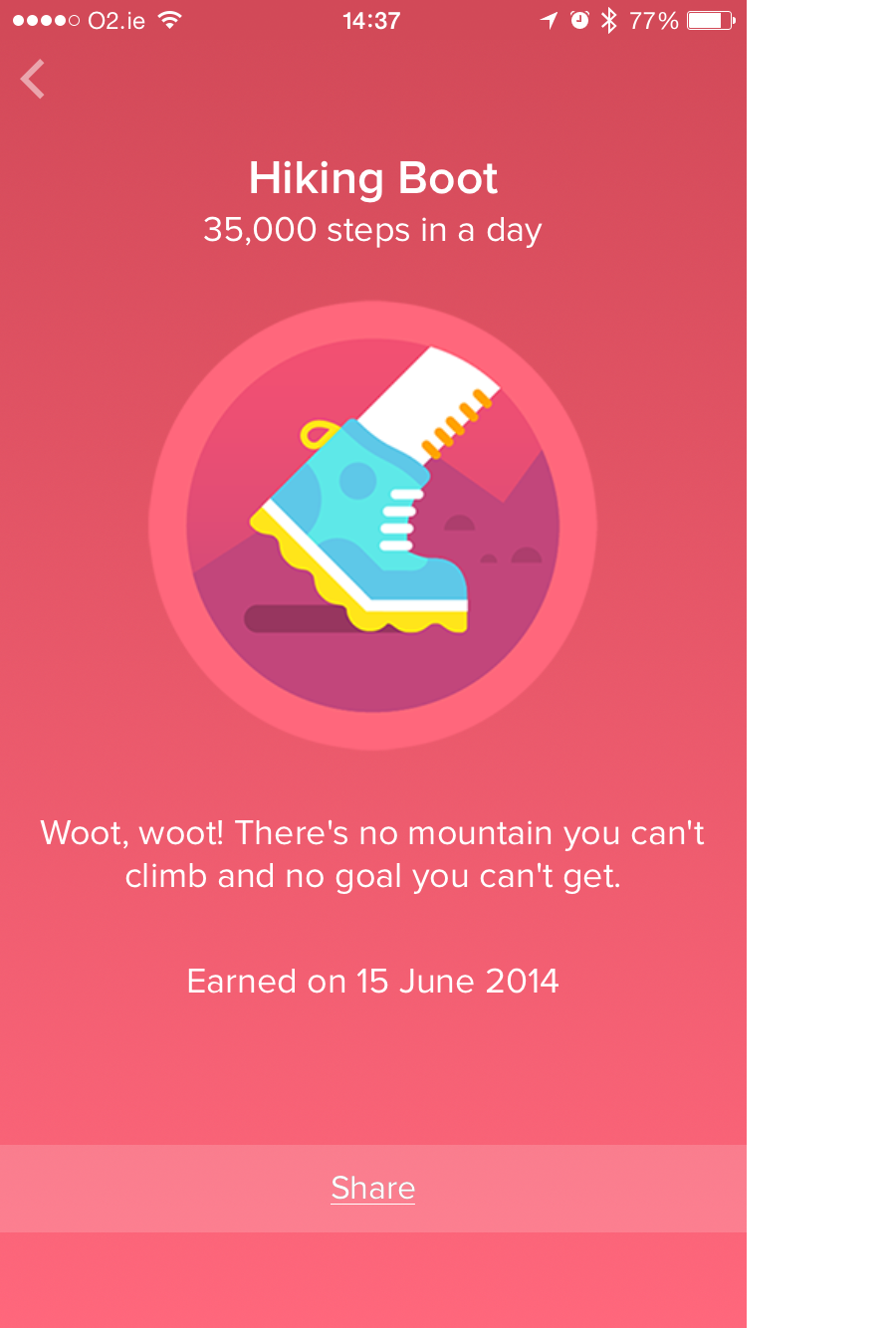How To Build An App Born To Go Viral Like Candy Crush
As the world becomes more connected, whether an app is shared is often the make or break for reaching the ‘tipping point’ of market penetration.
The tipping point basically represents the point where a new technology product will gain serious traction.
As you can see from the diagram below, getting your app to become viral or even heard of, depends on hitting the sweet spot at a certain point in market penetration.
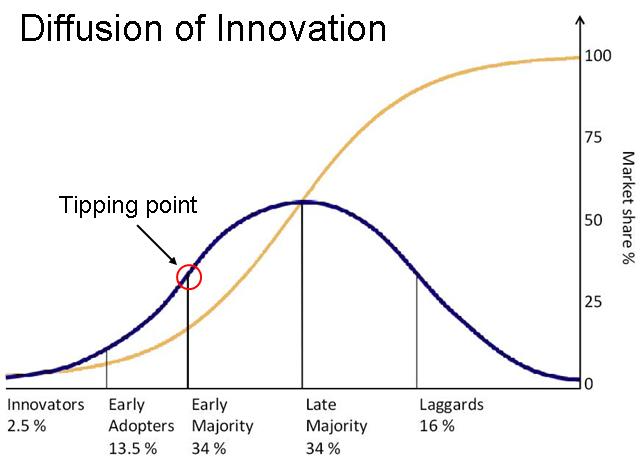
Source: Ideallc
The race to reach this point is a critical time for developers, and it’s harder than ever with the app market getting more saturated every day.
It’s the biggest fear of any mobile app startup, the fear of the ‘epic flop.’
“Why should I even build an app then Logan? If the market is so saturated and hard to penetrate, wouldn’t I just be flushing money down the toilet?”
If that’s your answer, then you are not a true innovator.
There are several strategies to building a viral app that have worked for plenty of other app startups.
In this article, I’m going to teach you how Candy Crush actually built virality into their application.
This is something that any app developer can do for you if the strategy is carefully constructed.
What is virality?
“Virality is not a single feature. It’s a design principle. It’s not a result of good luck. It’s engineered.” – Greg Pietruszynsk, Kissmetrics
When most people think of virality, they think “SHARE IT TO FACEBOOK!”
Building an app that will go viral is more than just throwing in a ‘share’ or ‘invite friends’ button onto a few screens.
For an app to go viral, it needs to have viral features built into its architecture.
Now I’m going to get mathematical here, so bear with me a moment.
“Going viral” typically means having a viral growth coefficient of greater than 1.
This means that for every user you attract to your app, he or she refers 1 additional user.
It’s the dream for any app developer to hit this coefficient – it’s free marketing, it’s organic and it’s more credible than anything you could push out yourself!
Candy Crush is the poster child for app virality
Within a year of its release for Facebook in 2012, the app had 46 million average monthly users and was bringing in 75% of developer King’s annual revenue.
It’s estimated that it makes $800, 000 daily revenue through in-app purchases, the game’s only monetisation model.
THE DREAM! (RAISED HANDS EMOJI)
Unbelievably, 70% of Candy Crush’s users have NEVER paid for anything in the app, and they’re still bringing in this kind of cash…
This is testament to what a widespread phenomenon the game has become.
So, how can you make this kind of magic?
Keep reading to find out.
Types Of Virality
1. Inherent: Inherent virality means that a person gets no enjoyment from using your app, unless other people are using it.
As an example, without friends on Facebook, you’d have nothing in your newsfeed, and without other people in your city using Tinder, you’d have no matches.
Read this later: How Tinder Turned Itself Into An Explosive Growth Machine
2. Incentivised: This type of virality is forced and built into a reward system that relies on sharing to give the user extra value. For example, Trivia Crack’s forces you to ‘share to Facebook to unlock lives.’ So cheeky, but so effective.
3. Word of Mouth : How do you get people talking about your app? It’s simple, built a product worth talking about. For example, Slack and MailChimp went viral because of how quirky they are.
Candy Crush, Uber, Clash of Clans, RunKeeper, FitBit…
What these apps have in common (besides the fact that they’ve all gone viral) is that they don’t rely on other people using them to give an individual user value.
Being able to share your own progress, monitor your friends’, communicate with them about the app (through the app) and challenge each other, makes using these apps more engaging than solitary use.
Candy Crush’s ingredients for viral success
1. Facebook integration
At the heart of Candy Crush’s viral adoption is its integration with Facebook.
When players progress in Candy Crush, the game posts Facebook updates on their behalf, so all their networks can see they are using the app.
This captures the attention of the player’s friends as it serves as a personal endorsement of the game – And the strongest social proof of all is a personal recommendation from family or friends.
But Candy Crush didn’t stop there.
They bolstered this virality by also showing the progress of a player’s Facebook friends on the game’s level map.
This fostered competition among the player’s social network and pushed them to keep playing the game, share their achievements, and so on, in a continuous viral cycle.
Not bad for a game that most people play alone for 1-5 minutes waiting for the train!
See also: How Uber, Angry Birds And Other Viral Apps Got Their First 10,000 Users
2. Level structure promotes addiction
The game has high retention (otherwise known as addiction) because it is goal oriented.
The game’s levels are designed for the player to constantly achieve small, attainable goals.
If it was too hard to achieve these goals, people wouldn’t share their progress.
This strategy is also backed by some compelling psychology: People who perform highly in a remedial group have higher self esteem than those that perform badly in an advanced group.
In terms of mobile app retention, this means that people will use an app more frequently if they feel good about themselves every time they use it.
3. Integrates across multiple devices
Candy Crush synchronises a user’s game play across any device that has Facebook integration.
This means that someone can play Candy Crush on the train on the way to uni, and then continue their game on their laptop once they arrive at the library.
This simple integration gives players’ more opportunities to play and spend money.
How can you build an app like Candy Crush?
Not every app will be able to replicate the social techniques Candy Crush used to go viral, but there are some valuable insights you can take away from its success and apply to almost any app.
Lesson 1: Engineer your viral loop
What is a viral loop?
Think of it as the steps a user goes through between entering your app and inviting the next set of new users.
You may already have the features available to share your app – integration with social media APIs, widgets on all your channels, etc.
The point of creating a loop is to optimise the set of steps users have to go through to actually use these share features, so you are increasing conversions.
Andrew Chen described it perfectly when he said to reverse everything you think you know about apps that go viral.
Instead of asking “We have product X, how do we virally spread it?”
… you should ask:
“We have viral loop X, what’s the right product to put into it?”
Some apps have multiple viral loops.
Facebook, for example, revolves around the newsfeed, the invite request, and the activity timeline. It’s not about people coming to your profile page and interacting with it.
Let’s take a look at YouTube’s viral loop as an example:
- The viewer’s first encounter will probably be a video embedded in a page (on social media, a blog, or a news publication)
- If they like it, at the end of the video there’s an embed code that can be directly copied
- Or, if they don’t want to embed or e-mail that video, other videos are recommended at the end of the process so that people can try those, and potentially embed a different one.
- Repeat
How to build your own (tight) viral loop
I’d highly recommend checking out this article for in-depth information on this topic, but here is the break down:
Step 1. Identify your viral media
Through which media will people enter your loop? You’ve got a few channels available to you – Social media, email, SMS…
When evaluating media, make your decision based on:
1. Ease of integration with your app
2. Response rate – will Facebook invites or email have a higher response rate?
Step 2. Design your funnel
How will you push people to the next step after entering the loop?
Your funnel should be as short and accessible as possible – every new page a user has to open is a barrier to sharing.
Keep it less than 2 screens, and optimise each screen with compelling copy and design!
Have you ever gone to share something in an app and been taken to the mobile website for Facebook, where you then have to log in with your separate account?
It’s annoying, time consuming, and just causes users to exit the viral loop, or worse, exit the entire app due to poor user experience.
Step 3. Identify your app’s viral hook
No matter how great your viral loop is, an app that doesn’t engage users won’t get continuously shared.
What is the one feature of your app that will make people WANT to put it all over their newsfeeds, share it over email and more?
The best examples gives people an avenue for personal expression (avatars, music, unique content) or a communication mechanism (messaging like Snapchat, videos like Dubsmash)
Step 4. Add ‘on-ramps’
On-ramps are ways that let people discover your viral loop and begin the process.
Ideal places for on-ramps are your website, paid advertising, app store optimisation and publicity.
Lesson 2: Seed other social networks
We’re living in a time where our devices are more connected than ever before, and consumers are expecting your app to fit with their lives, not the other way round.
Candy Crush would not have received so much play time if it wasn’t multi platform.
To increase frequency of use, consider integrating your app with other devices and platforms (and ensure this integration is seamless!).
The other benefit of this strategy is it extends your reach to as many new users as possible. You’ll reach a potential new base of users on Twitter who aren’t on Instagram, for example.
Speaking of Instagram…Instagram is the poster child for user acquisition ‘out of network’.
It leveraged existing social networks like Facebook, Twitter and FourSquare when it first launched as a way to gain new users.
They really didn’t have any other option – There is limited sharing within the network, aside from liking and commenting. You can’t even easily ‘regram’ a post with one button.
Users were encouraged to share their images on these social networks, and it allowed Instagram to find new users from these channels and get additional adopters.
This was quite an organic, natural generator for new people to see the products of Instagram and entice them to enter the network.
See also: How Instagram Became The Number 1 Photo App In 8 Hours
For best results, and to avoid spreading your brand too thin, you’ll need to come up with a detailed omni-channel communication strategy.
This is one reason why branding is so important for mobile apps. A strong brand will translate across all mediums and channels.
A simple way to increase recognition across channels is to incorporate a signature into the product being shared.
DubSmash does this really well by putting its logo in the corner of all videos created using DubSmash (which are often shared on Instagram and Facebook).
‘Powered by X, ‘Sent from my iPhone’, ‘Created using X’ are all ways to increase brand awareness among potential new users entering your loop.
Lesson 3: Incentivise
Referrals (or incentive marketing) are becoming a more and more popular customer acquisition strategy, largely because marketers recognize the power of personal endorsements.
If you can identify what kind of reward would prompt the greatest desired action (a share) you are well on your way to getting users to give a personal recommendation.
This might be:
- In-app currency
- Extra lives
- Aaccess to premium features they would normally have to pay for
- Free delivery
- Exclusive content
- Whatever delivers value and is related to the core offering
Based on past successes with referral marketing, incentives that give equal benefit to the referrer and invitee seem to work best.
This ensures your existing users are engaged as well as your new users – win win!
Candy Crush knew that asking people to share their progress wouldn’t do much without the right incentives – When you share, you get something back.
Candy Crush offers exclusive content and extra lives in exchange for a Facebook share.
Another app that has had enormous success with this is Dropbox.
They give the refererrer and the invitee extra space on their Dropbox account when they get new signups.
Uber also uses this scheme – in Australia, users are welcomed with a ‘free’ ride (to the value of $25) and are given unlimited free rides for every new user they get to sign up.
The invitee also gets the same deal.
According to the data that Uber makes available, these free rides are one of its key growth drivers.
Lesson 4: Find the ‘happy moment’
Just like you wouldn’t ask a new user for a review on the app store straight off the bat, neither should you ask for a share or a referral if the user hasn’t been using your app for long.
Monitor your app analytics to identify the ‘happy moment’ – The moment where users will be most likely to share your app with their friends.
You’ll increase conversions if you prompt them at the ideal time.
Most users will use your app a lot in the first 7 days of downloading it, but naturally drop off and use it less and less.
You could identify users at risk of becoming inactive at this point and prompt them with an invite to refer a friend for a juicy reward.
That being said, every app is different.
Waiting 7 days might be too long to wait if your app is so addictive it’s being used multiple times a day.
You can automate your sharing prompts based on cumulative time spent in your app.
For example, after a user has spent 100 total minutes session time, send them a push notification or in-app message prompting them to share.
Timing is everything!
In-app prompts should be non-intrusive and shown at natural pause points in the users’ session time.
You don’t want to compromise user experience in any way!
For apps like Candy Crush, this would be between game levels or after Game Over.
FitBit has a lot of success asking for shares when the user has just achieved one of their creative, custom badges.
Test your prompts’ timing, copy and display format to see what gets higher conversions.
I hope this post has given you some valuable insights into how you can apply the viral techniques of Candy Crush and other viral apps to your own app!
Are you building an app with viral features? Let me know in the comments!
Latest posts by Logan Merrick (see all)
- Ep 18: Collective Campus’ CEO on Intrapreneurship and Corporate Innovation - December 20, 2016
- 50 User Engagement Strategies For Planning Memorable Mobile Experiences - December 19, 2016
- Latest Data: App Monetisation Trends And Drivers 2015-2020 - November 25, 2016


